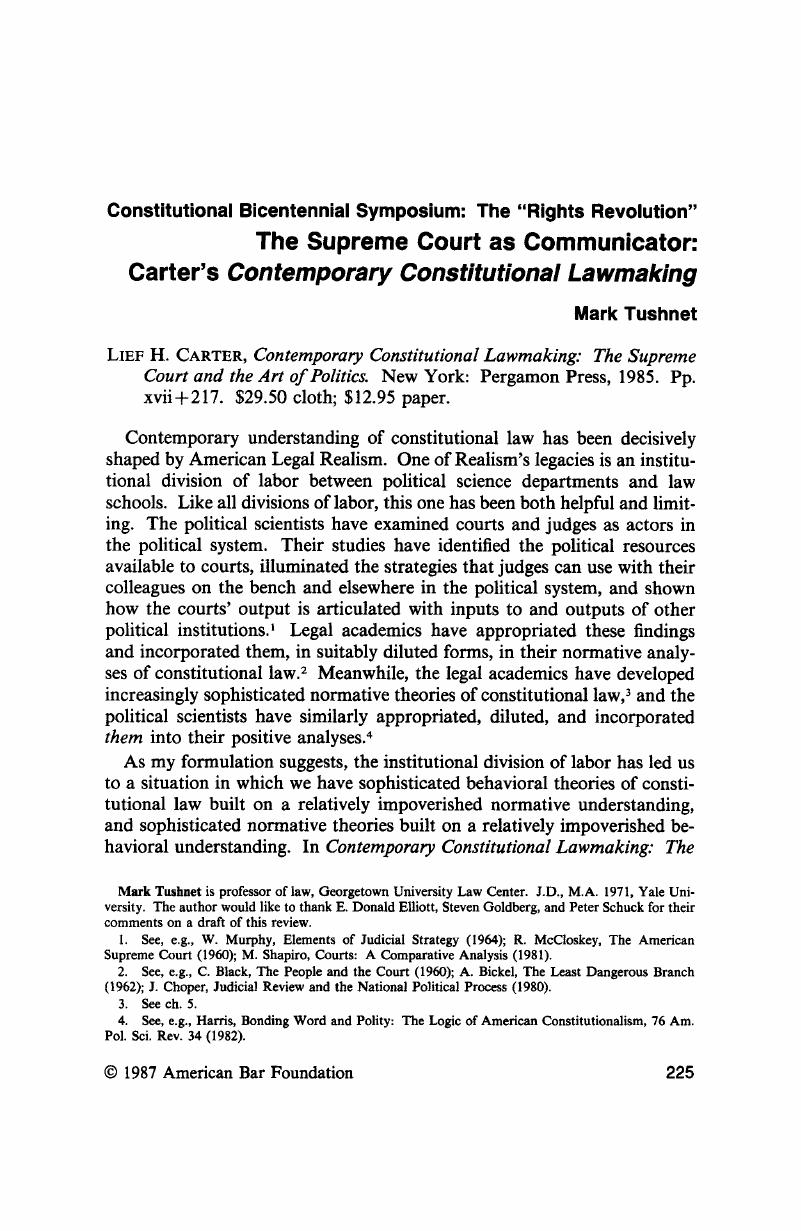No CrossRef data available.
Published online by Cambridge University Press: 20 November 2018

1 See, e.g., W. Murphy, Elements of Judicial Strategy (1964); R. McCloskey, The American Supreme Court (1960); M. Shapiro, Courts: A Comparative Analysis (1981).Google Scholar
2 See, e.g., C. Black, The People and the Court (1960); A. Bickel, The Least Dangerous Branch (1962); J. Choper, Judicial Review and the National Political Process (1980).Google Scholar
3 See ch. 5.Google Scholar
4 See, e.g., Harris, Bonding Word and Polity: The Logic of American Constitutionalism, 76 Am. Pol. Sci. Rev. 34 (1982).Google Scholar
5 My own limits, aside from my being an academic lawyer rather than a political scientist, should be noted: I am entirely untutored in the philosophy of art, have essentially no appreciation for serious modern music, and have only a modest understanding of the esthetics of modern visual arts.Google Scholar
6 From the point of view of an academic lawyer, Carter's work contains perhaps too much attention to the nonnative work of such political scientists as Gary McDowell, Walter Berns, and Walter Murphy. It is a symptom of the institutional division of labor that these political scientists have played almost no role in this decade's discussions among academic lawyers of constitutional law and theory.Google Scholar
7 See also pp. 30–32 (list providing descriptive summary of constitutional theories).Google Scholar
8 See Wilson, The Most Sacred Text The Supreme Court's Use of The Federalist Papers, 1985 B.Y.U.L. Rev. 65.Google Scholar
9 Missouri v. Holland, 252 U.S. 416 (1920).Google Scholar
10 See, e.g., Home Building & Loan Ass'n v. Blaisdell, 290 U.S. 398 (1934).Google Scholar
11 For a preliminary and informal effort along these lines, see Tushnet, Sloppiness in the Supreme Court, O.T. 1935–O.T. 1944, 3 Const. Commentary 73 (1986).Google Scholar
12 N. Goodman, Languages of Art: An Approach to a Theory of Symbols 258 (2d ed. 1976).Google Scholar
13 In this analysis, Carter draws on the work of Jurgen Habennas, as refracted through the modem American pragmatists such as Richard Rorty. See pp. 143–50.Google Scholar